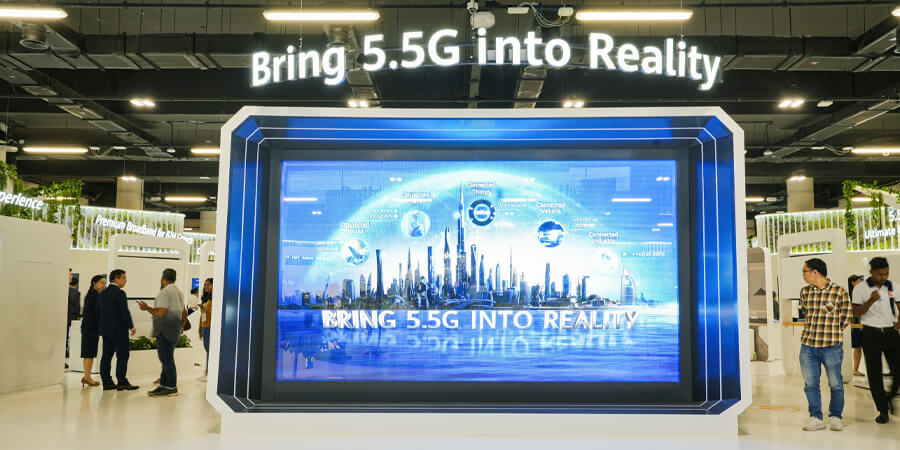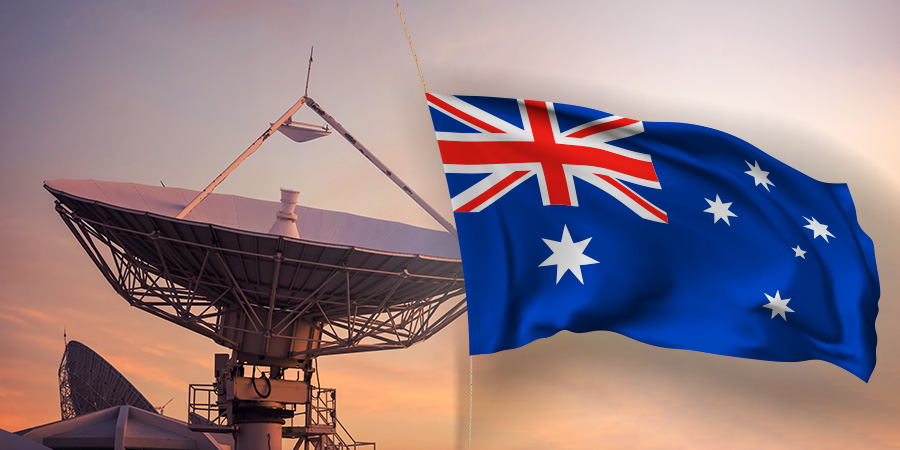The 14th Global Mobile Broadband Forum (MBBF), hosted by Huawei, supported by industry partners GSMA, GTI, and SAMENA Telecommunications Council, redefined traditional boundaries this year by seamlessly blending both virtual and in-person experiences. This unique fusion provided a dynamic platform for stakeholders in the mobile and related vertical ecosystems to delve into the intricacies of 5G business success, nurture ecosystem maturity, and expedite the commercialization of 5.5G technologies.
The event featured an impressive lineup of speakers and introduced innovative products, reaffirming its status as the epicenter of the mobile industry. It offered a vibrant arena for discussions on how mobile broadband technology is not only shaping the future but also continuously shaping lives and industries.
On October 10 and 11, 2023, tech industry leaders and enthusiasts converged in Dubai, UAE, for this exceptional event. The two-day hybrid gathering delved into the world of 5.5G, exploring the untapped potential of this cutting-edge technology, emphasizing its transformative impact, current challenges, and the collaborative solutions necessary to unlock its vast benefits. Diverse speakers from various sectors of the industry shared global best practices in 5.5G deployment, underlining the importance of nations, organizations, industries, and businesses leading the charge in 5.5G adoption. Their collective outlook remained firmly optimistic, driven by the boundless opportunities and novel capabilities of 5.5G technology that continue to fuel global innovation.
For this, Li Peng, Huawei’s Corporate Senior Vice President and President of the company’s Carrier BG, emphasized, “We are already on the right path towards 5G business success, and 5G-Advanced is the natural next step in 5G’s evolution. Let’s start today, build tomorrow’s networks for future services, and unleash 5G’s infinite potential for continuous success.”
5G’s Rise: A Global Landscape in Rapid Transformation
The 5G deployment landscape has witnessed a swift evolution over the past four years. By June 2023, the world had observed the proliferation of more than 260 operational 5G networks, serving an astonishing 1.2 billion 5G users and enabling over 50,000 diverse 5G industry applications.
Notably, China has emerged as a global leader in 5G adoption, with remarkable statistics. According to data from China’s Ministry of Industry and Information Technology in March, the nation boasted an impressive record of 630 million 5G users and had successfully deployed over 2.64 million 5G base stations, accounting for over 60% of the total global installations. An extraordinary achievement includes the implementation of gigabit networks in 110 cities across China, ensuring comprehensive 5G connectivity coverage in key venues.
The future of 5G in China, the world’s largest 5G market, continues to appear promising. The GSMA predicts that by 2025, China is poised to become the first market worldwide to achieve an astounding 1 billion 5G connections, highlighting the rapid transformation of the global digital landscape.
RedCap: Pioneering the Next Era in 5G Connectivity
In a momentous revelation at the Global Mobile Broadband Forum 2023, Huawei unveiled the global commercialization of RedCap, a groundbreaking 5G technology with the ambition of connecting 100 million devices within the next three years, heralding a transformative era in digital connectivity.
RedCap, celebrated for its unique blend of cost-effectiveness and high performance, is poised to revolutionize multiple industries, offering a tenfold increase in network capacity compared to its 4G predecessor while simultaneously consuming 20% less power. It fully supports critical 5G features, including ultra-reliable low-latency communication, network slicing, and cellular IoT, simplifying 5G infrastructure with a unified network approach. The rapidly maturing RedCap ecosystem is experiencing collaborations with global carriers and industry partners, with expectations to introduce over 50 industry-specific devices by the end of 2023. This innovative 5G technology’s collaborative and forward-looking approach is set to usher in a new era in connectivity and technology.
Unleashing the Potential of 5G: A Bright Future in Guangdong’s U-Joy Cities
On the first day of the Huawei Global MBB Forum 2023, Telecom Review participated in the 5G Industry Summit, which centered on “Unleashing 5G Potential for Industry Acceleration and Business Success.” The summit featured a distinguished lineup of speakers who explored various topics, from policy-making to ecosystem and business aspects. Regulators and industry leaders engaged in discussions about 5G spectrum release policies to expedite spectrum license issuance in emerging markets, shedding light on fostering a positive 5G business cycle. The summit showcased success stories, emphasizing experiences that facilitate service growth and business monetization.
Among the speakers, Pan Guixin, Chief Innovation Officer and General Manager of the Network Product Innovation Center at China Unicom Guangdong, shared updates on the U-Joy Cities program. Launched in May 2022, this program – a collaborative venture between China Unicom Guangdong and Huawei – aims to customize 5G to the unique characteristics of the Greater Bay Area and cities in Guangdong. The program’s goal is to establish a 5G ecosystem with industry partners, driving industry digitalization.
Guangdong stands out with the world’s largest 5G standalone (SA) network, creating an ideal environment for 5G application innovation, featuring 147,000 5G base stations and 300 MHz of 5G C-Band spectrum, offering extensive 5G coverage across 21 cities, major counties and towns.
China Unicom Guangdong has been a pioneer in propelling 5G innovation. The U-Joy Cities project, encompassing the Guangzhou Gigabit City, Yangjiang Marine City, Foshan Manufacturing City and Shenzhen Pioneer City, has played a pivotal role in unlocking 5G’s potential for smart living and industry. Pan highlighted real-world use cases and China Unicom’s contributions in these scenarios.
Under the U-Joy Live Broadcasting initiative, China Unicom Guangdong leads in 5G live broadcasting, with plans for further expansion in the coming year. In the field of education, they have established 5G educational private networks to promote equal access to educational resources. The U-Joy at Sea initiative enhances safety and profitability in the fishing industry through 5G innovation. Additionally, China Unicom is driving digital transformation for small and medium-sized enterprises (SMEs), resulting in significant improvements in productivity and cost reduction.
Pan also emphasized the cost-effectiveness of 5G RedCap and its role in digitalizing manufacturing. China Unicom Guangdong is well-prepared for the large-scale commercial deployment of 5G RedCap, with a particular focus on various sectors, including AGV control and intelligent video. In fact, the U-Joy Cities program in Guangdong is poised for a bright future with 5G-Advanced business as the industry accelerates toward innovation in 5G standards, networks, industries and ecosystems.
Pioneering 5G Innovations: Unveiling the GigaGreen Revolution
In the rapidly evolving realm of telecommunications, the pursuit of 5G technology has taken center stage, captivating the attention of industry leaders and innovators. At the heart of this transformation are the visionary concepts of GigaGreen and GigaVerse, both poised to redefine the 5G connectivity experience. Fang Xiang, Vice President of Huawei’s Wireless Network Product Line shed light on Huawei’s trailblazing approach to full-band evolution in 5G and its comprehensive suite of solutions aimed at forging GigaVerse and GigaGreen 5G networks.
Fang Xiang elucidated the driving force behind Huawei’s GigaGreen initiative, emphasizing its origins in close collaboration with network operators during the transition from 4G to 5G. This approach revolved around a meticulous analysis of the evolving demands and requirements of these operators. The result, GigaGreen, is a concept with dual connotations, “Giga” encapsulating both “Gigaband” and “Giga experience.” “Gigaband” addresses the intricate task of harmonizing the fragmented spectral bands during the transition from 4G to 5G, ensuring the seamless and efficient operation of the network. Conversely, “Giga experience” centers on optimizing the end-user experience and extending network coverage.
Fang elaborated on the “Green” facet of GigaGreen, underlining the significant concern of energy consumption for network operators, often constituting a substantial portion of their operational expenses. Operators face the challenge of anticipating a three to four-fold increase in network traffic during the transition to 5G while aspiring to maintain energy consumption at current levels. To tackle this, Huawei has devised innovative products that substantially reduce energy consumption, with an emphasis on “0 bit, 0 watt” energy-efficient solutions.
Huawei’s commitment to sustainability extends beyond energy savings. GigaGreen’s product portfolio prioritizes the reduction of equipment size and weight. This streamlined design not only helps operators save deployment space but also lessens the reliance on supporting materials, contributing to the broader sustainability goals of both operators and society at large.
GigaGreen embodies Huawei’s response to the evolving landscape of 5G, one that anticipates a diverse array of services and applications, encompassing cloud gaming, cloud-based augmented reality (AR) glasses, 3D connected cars and a multitude of interconnected devices. These innovations necessitate networks with new capabilities, and green technology stands at the heart of achieving these requirements. Huawei’s mission is to maximize the value of every hertz of the spectrum, enabling operators to extend their network coverage, enhance downlink and uplink capacity, minimize latency and create more energy-efficient 5G networks.
LampSite X Solution: Revolutionizing Indoor Connectivity
During the Huawei MBBF 2023, Eric Bao, Huawei’s President of Wireless Digital Indoor System (DIS), shared invaluable insights, shedding light on the imperative role of indoor network solutions in the era of 5G. He began by highlighting the staggering pace of 5G development, noting that it has amassed 1.5 billion users worldwide in just three years, a feat that took 3G a decade to achieve. With over 260 5G networks and approximately 4 million 5G base stations globally, the rapid 5G evolution presents both an opportunity and a challenge for network operators.
Eric underlined the emergence of new services, particularly the surging demand for advanced video streaming experiences and the role of AI in driving immersive services like AR/VR and glass-free 3D. In response to these trends, he pointed out a critical statistic: roughly 80% of 5G traffic is generated indoors, despite indoor network speeds being only 1/10 of their outdoor counterparts, highlighting a significant disparity that needs to be addressed.
To meet the growing demand for better experiences and enhanced capacity from 5G, Eric emphasized the necessity of prioritizing indoor network infrastructure. He elaborated on four key principles for indoor networks in the 5G era: prioritize on high-value areas for a more significant return on investment, 4T4R on NR for a seamless indoor and outdoor experience, all-optical networking for superior capacity and ultra-low transmission loss, and diversified capability to better tailor the needs of various industry verticals and to unlock new business opportunities.
Eric also discussed the limitations of Distributed Antenna Systems (DAS) and drew a sharp contrast with the advantages of Digital Indoor Systems (DIS), exemplified by Huawei’s LampSite X. He articulated four significant bottlenecks inherent to DAS technology. First, typical DAS implementations offer a mere 1T1R configuration, leading to a substantial speed deficiency compared to DIS, which supplies 4T4R on NR, effectively aligning with the 5G terminal requirements. Second, DAS systems fall short when it comes to supporting the high-frequency bands imperative for 5G, while DIS solutions, like LampSite X, exhibit the capacity to cover a broad spectrum of frequency bands ranging from sub-1GHz to mmWave. Third, DAS lacks the critical support for measurement and locating capabilities, a feature widely demanded by business customers. Lastly, DAS heavily relies on an abundance of passive components, rendering it challenging to manage and control remotely. In stark contrast, DIS systems provide more streamlined, manageable, and maintainable solutions to these issues, presenting a superior choice for modern indoor network requirements.
Eric concluded by highlighting Huawei’s LampSite X, an innovative indoor digital system connected via fiber. LampSite X stands out with its compact and lightweight design, supporting various frequency bands, precision positioning, low latency, large uplink capacity, and energy-saving features. With LampSite X’s three-layered optical architecture, the upgrade and evolution of indoor networks beyond 5G are streamlined, offering a promising solution for operators to build cutting-edge indoor networks. Eric expressed confidence in the competitive products Huawei offers to work collaboratively with operators in achieving the optimal network experience in the 5G era and beyond.
Huawei’s 5.5G Solutions: Shaping the Future of Wireless and Business Technology
Huawei’s President of Wireless Solution, Cao Ming, unveiled their visionary strides in 5.5G technology at MBBF. In a fast-paced wireless world, staying ahead is imperative, and Huawei has been a frontrunner. Cao described how 5G was just the beginning, and the future holds even more promising prospects with 5.5G.
In the Middle East, where 5G deployment is rapidly advancing, Huawei collaborates with regional operators to push the boundaries. Notably, at the MBBF, du partnered with Huawei, signifying significant progress toward 5.5G. With the world’s first 5.5G villa, users can enjoy glasses-free 3D gaming and passive IoT innovation, all powered by 5.5G.
Huawei’s commitment to a seamless transition from 5G to 5.5G is evident in its full-series, full-scenario 5.5G products, with continuous innovations across five categories of basic capabilities: broadband, multi-band, multi-antenna, intelligent, and green, safeguarding telecom operators’ long-term investments.
Africa’s journey to embrace 5G is ongoing, with varying progress across the continent. Huawei tailors solutions to meet diverse scenarios and markets, ensuring a smooth transition when the time is right.
As Huawei leads in 5.5G development, they emphasize collaboration and regulatory support. Industry partners and regulatory authorities are urged to facilitate the growth of 5.5G ecosystems and applications. Financial incentives from local governments can play a pivotal role in accelerating the adoption of 5.5G, bridging the digital divide, and transforming industries worldwide.
In conclusion, the MBBF hosted by Huawei served as a testament to the rapid 5G revolution, firmly grounded in the theme of “Bring 5.5G into Reality.” This year’s forum underscored the pivotal role 5.5G technology plays in the ongoing transformation of the telecommunications industry. Huawei’s innovative initiatives are geared not only towards enhancing 5G but also towards setting the stage for the successful integration of 5.5G and beyond.
The focus on sustainability, energy efficiency, and seamless connectivity at the MBBF reflects the evolving demands of 5G applications and beyond. The introduction of 5.5G technology represents a significant leap forward, promising to revolutionize the way we experience wireless connectivity. With its full-band and multi-channel capabilities, 5.5G is well-equipped to meet the ever-increasing data demands of the digital age.
The breakthroughs unveiled at the forum are pivotal in establishing the foundation for a future where 5G and 5.5G technologies continue to reshape our digital landscape. They extend their impact beyond telecommunications, leaving no facet of our lives untouched. From powering smart cities to enabling groundbreaking medical advancements, 5.5G’s reach is boundless.
As we embrace this era of unprecedented connectivity and technological advancement, it’s clear that both individuals and global businesses stand to benefit immensely. With 5.5G becoming a reality, we can expect faster and more reliable connections, driving innovation in sectors such as autonomous vehicles, augmented reality and the Internet of Things. The MBBF was a reflection of the collaborative efforts and visionary thinking that will guide us into this exciting future, where 5.5G takes center stage in the evolution of our digital world.







